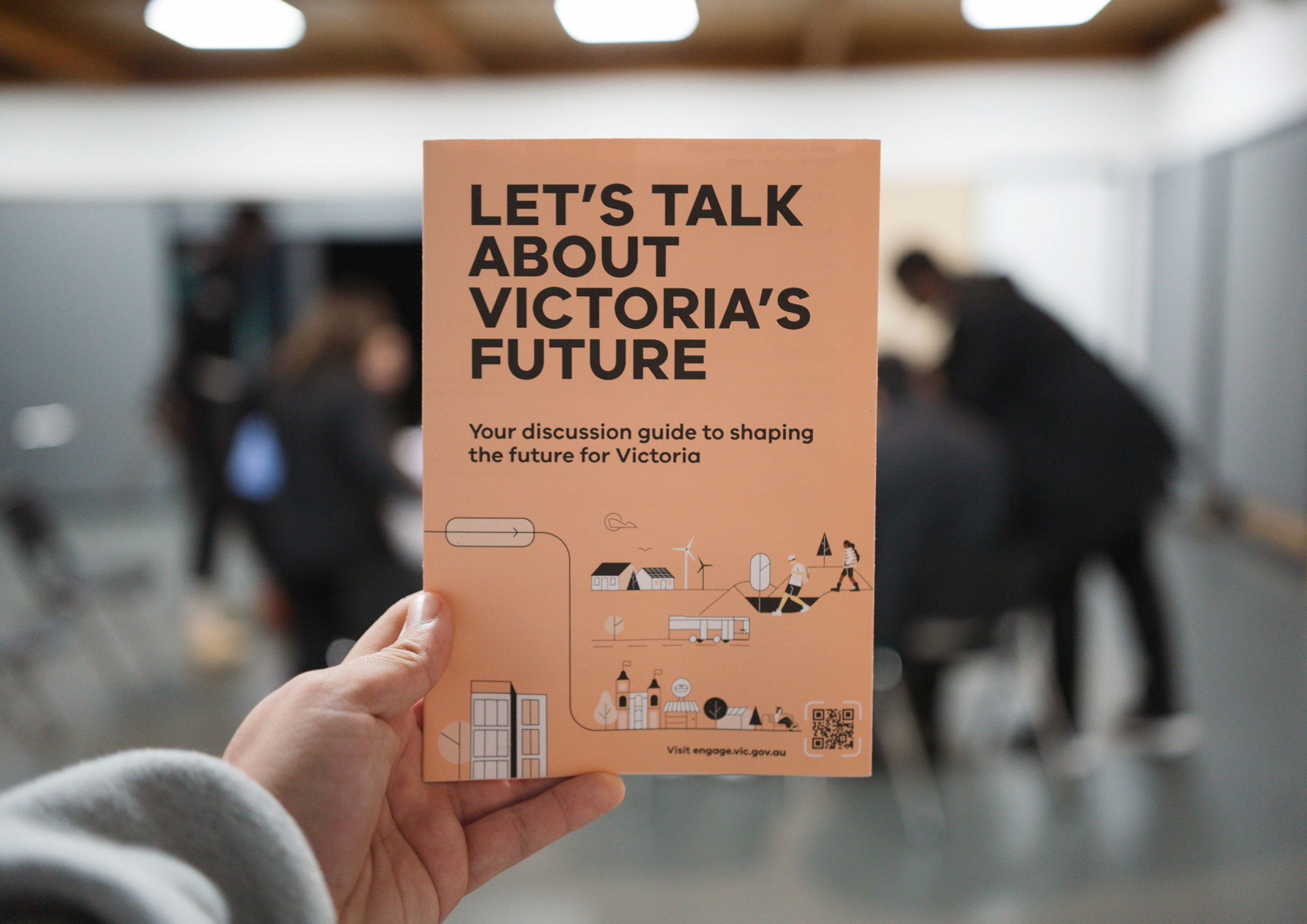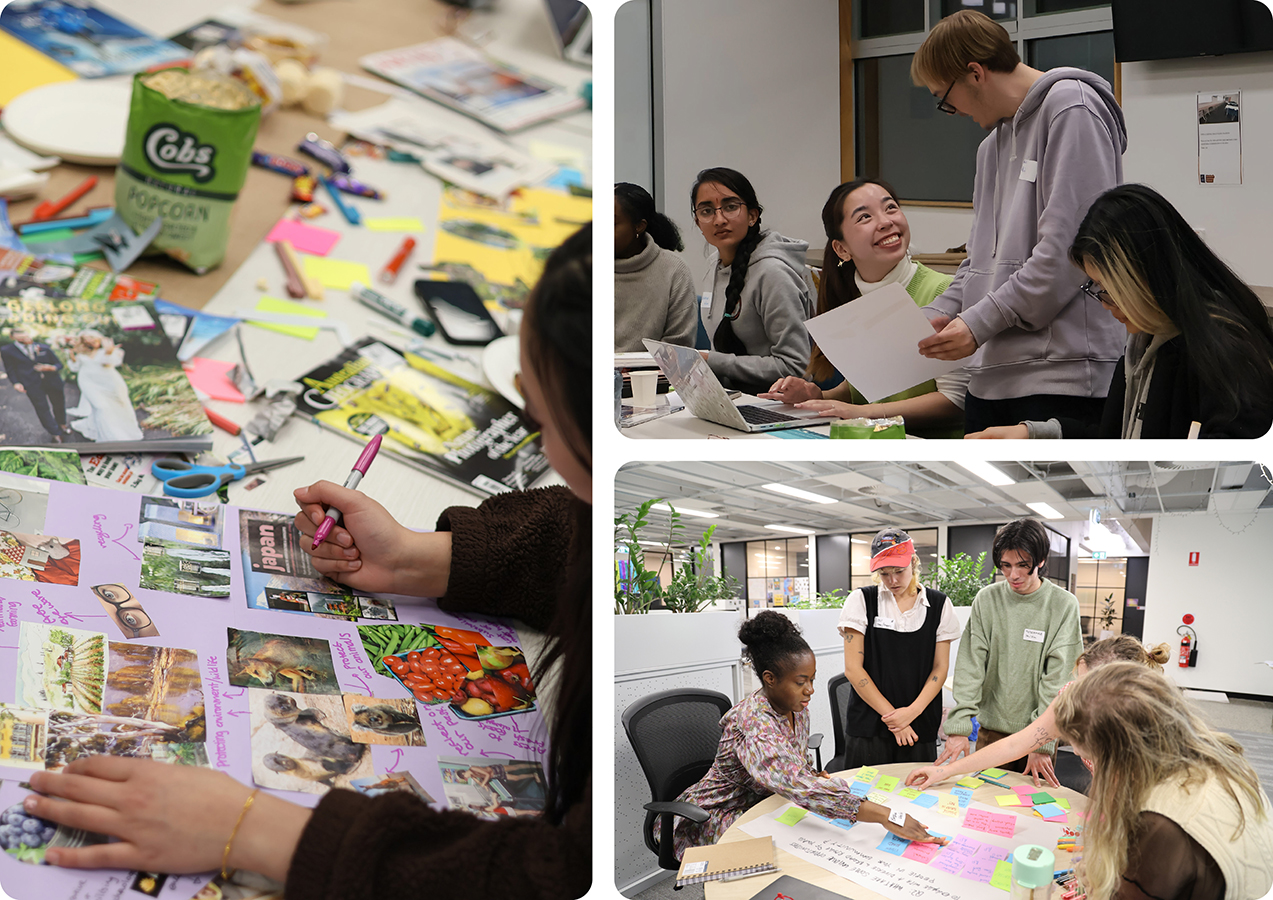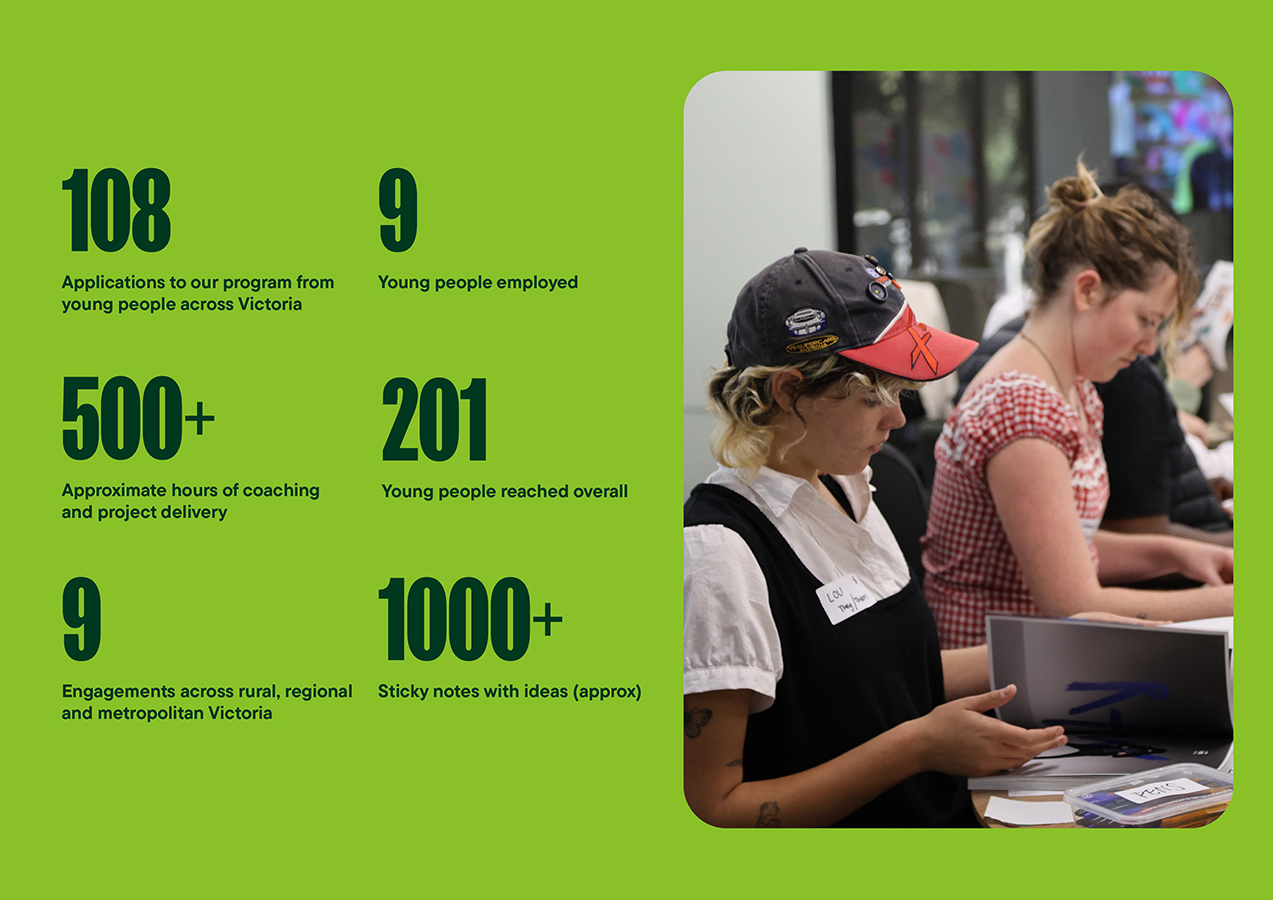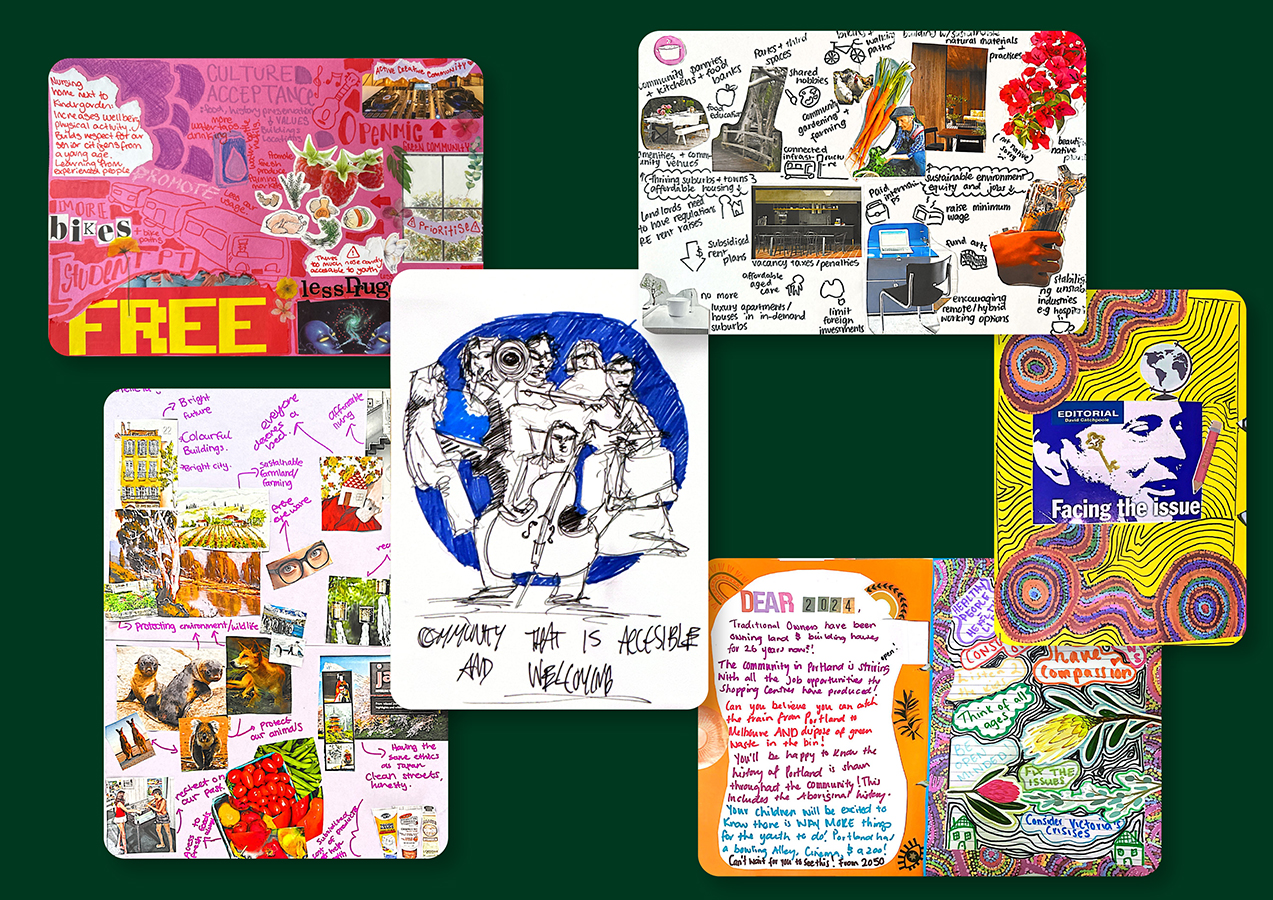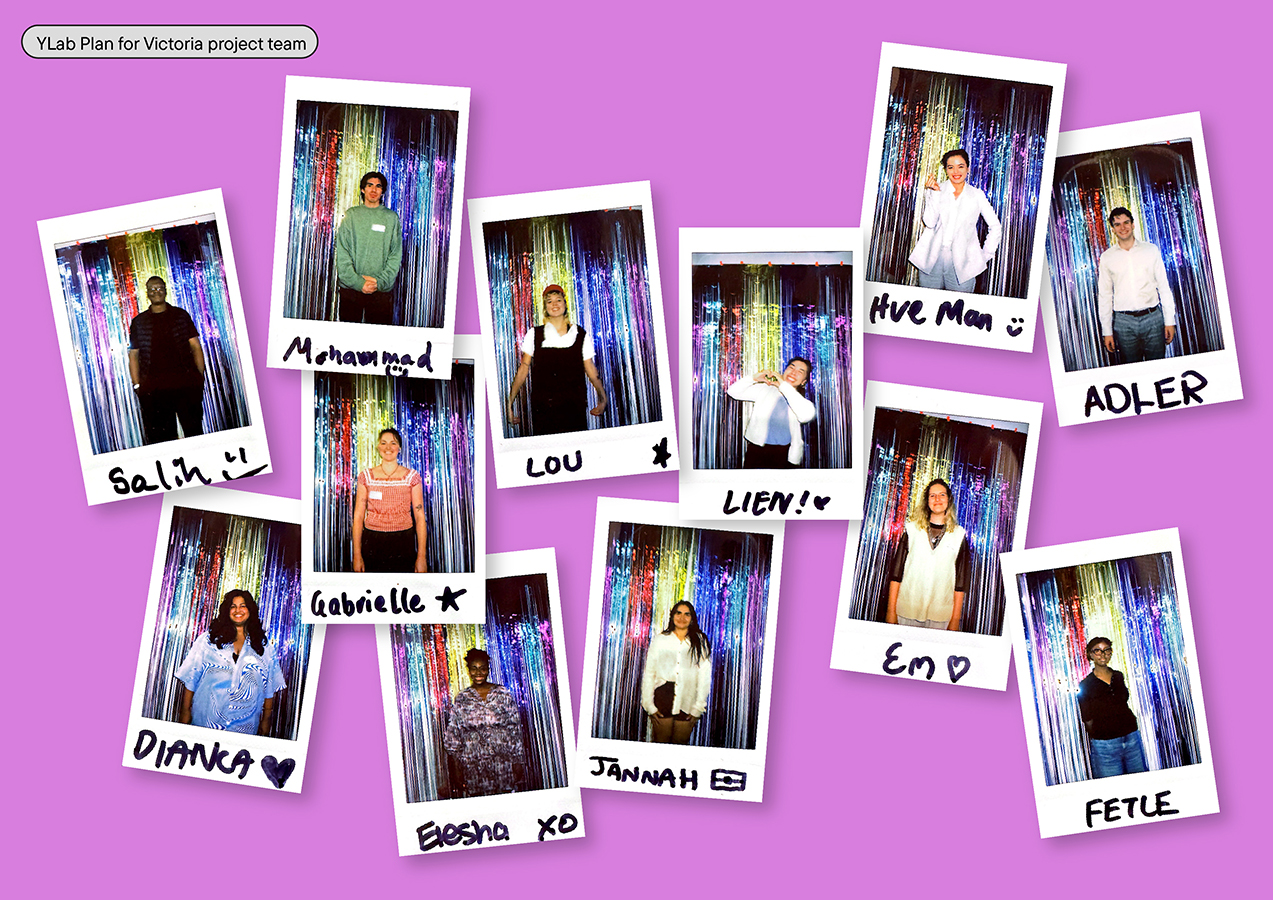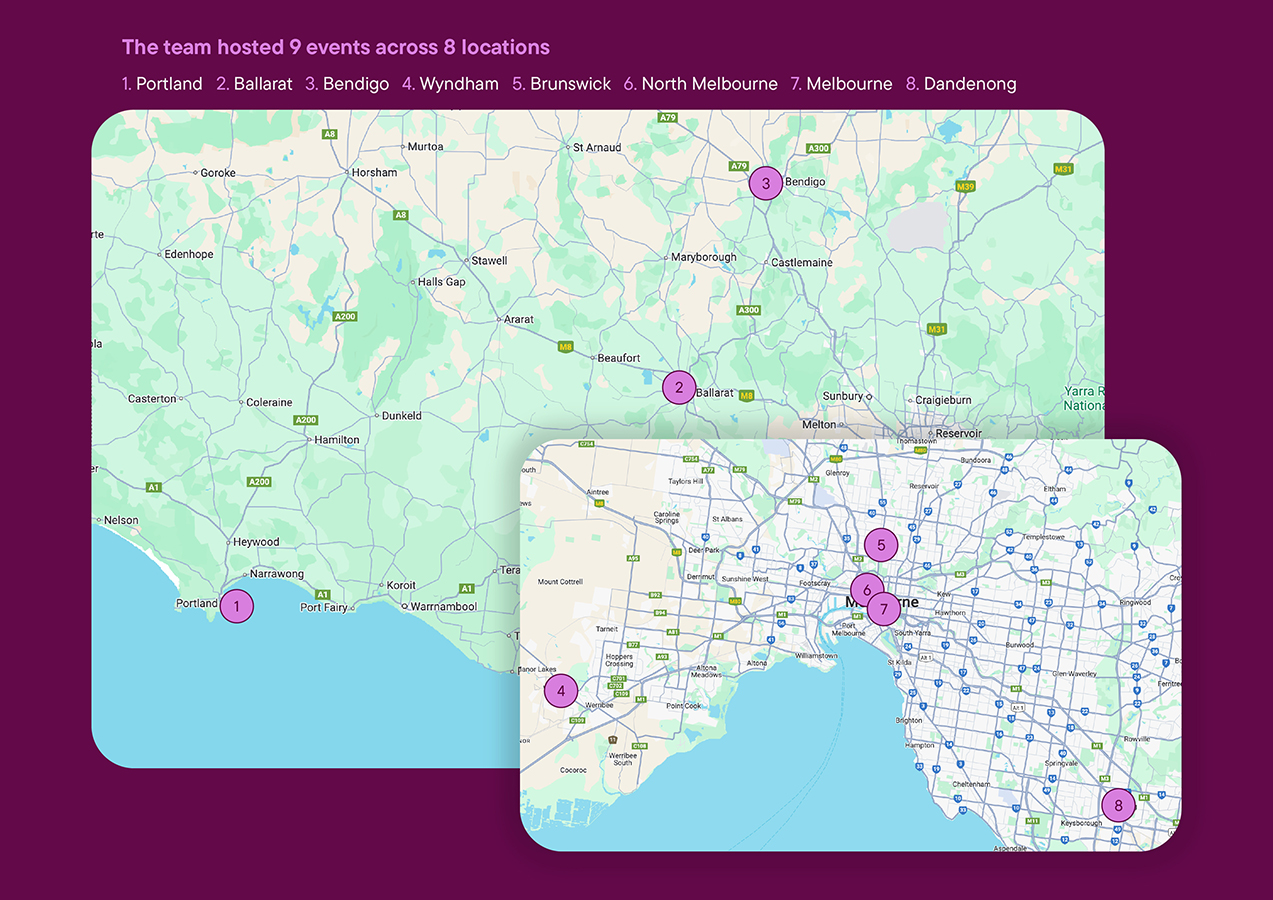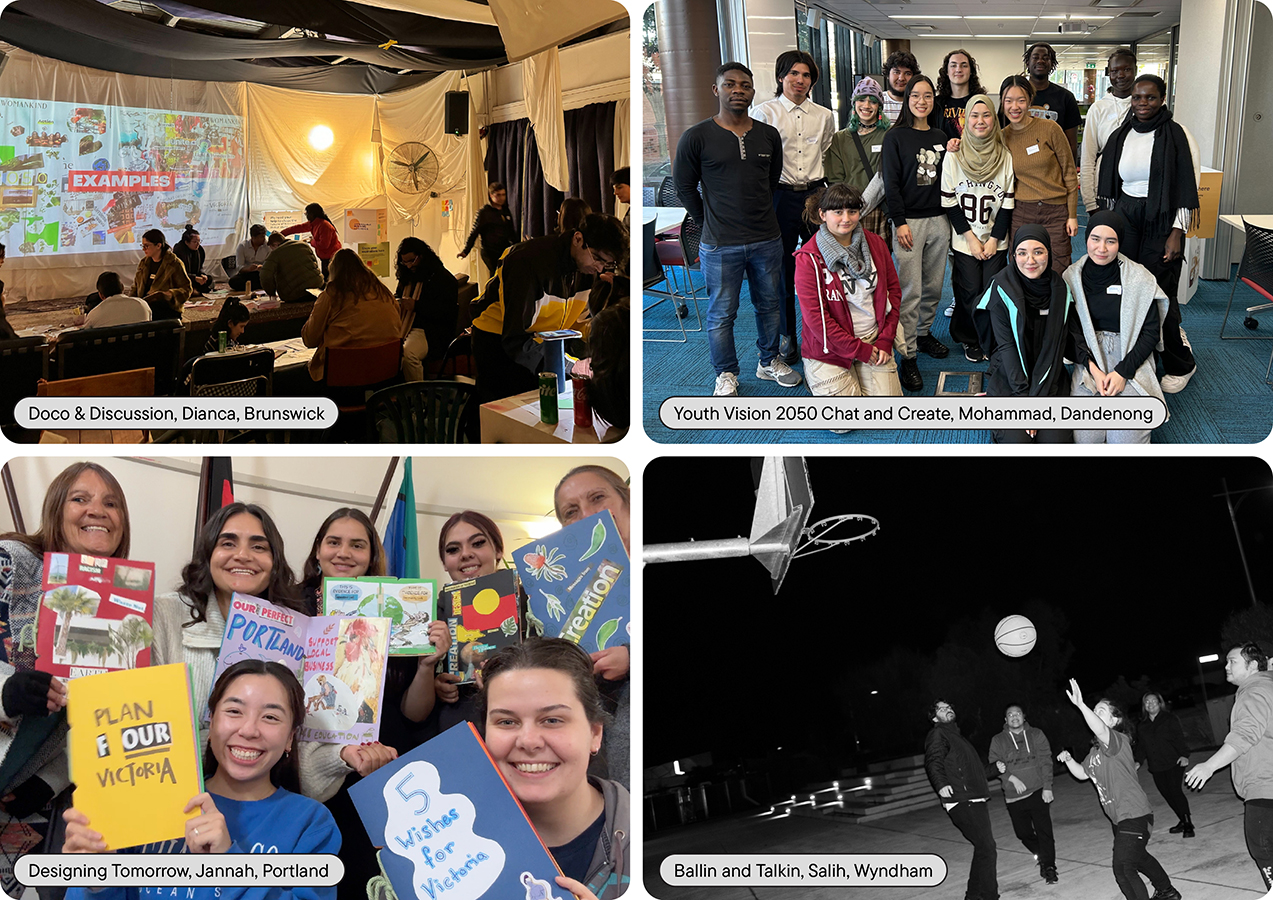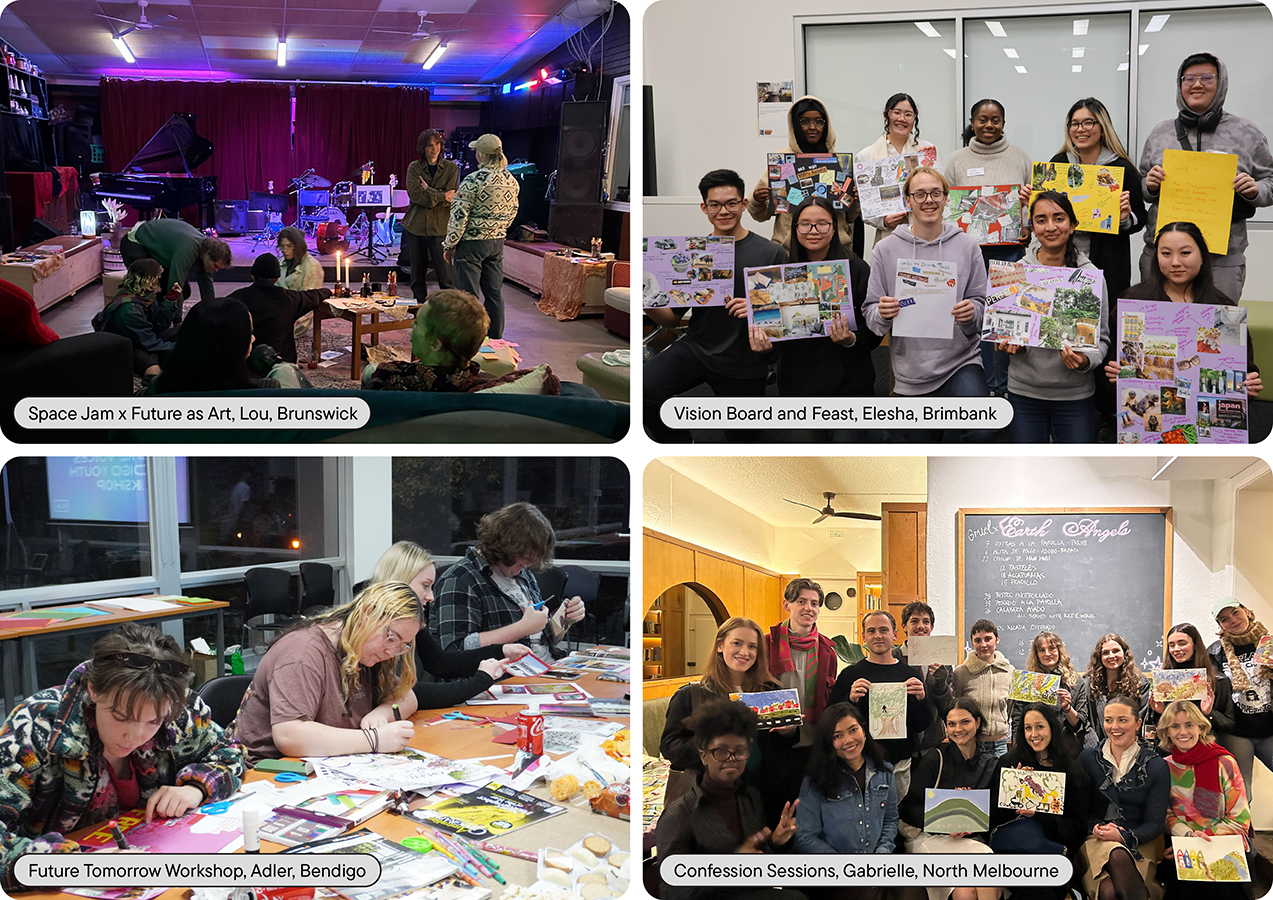The Plan for Victoria co-design process was a professional, multi-layered design strategy combining youth-led leadership, iterative prototyping, and real-time community feedback.
YLab recruited and trained nine Youth Ambassadors from across Victoria, equipping them with skills in co-design, budgeting, project management, and community facilitation. The Ambassadors co-designed and delivered tailored engagement activities—including art installations, sports events, workshops, and screenings—that resonated locally and made complex policy topics accessible and engaging.
Rather than relying on a one-size-fits-all model, the process was adaptive: Ambassadors tested ideas, gathered feedback, and iterated activities to ensure relevance, safety, and inclusivity. The results were not only seamless but deeply meaningful. Ambassadors synthesized local insights and maintained data integrity, ensuring the authentic voice of their communities was carried forward to the Department of Transport and Planning.
Over 200 young people were engaged across Victoria, and more than 500 hours of coaching supported the Ambassadors’ leadership journey. The project exceeded the brief by delivering not just community insights but long-term leadership outcomes: seven of the nine Ambassadors became new YLab associates, four secured employment, and three went on to lead independent community initiatives.
The design process proved that when young people lead, participation deepens, impact multiplies, and systemic change becomes possible.

